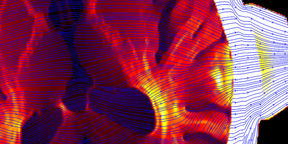Electromagnetics in Health Technology

The research combines numerical analysis of electromagnetic fields with anatomical and functional modelling, having multidisciplinary applications in biomedical engineering (device development), clinical practice (diagnosis and rehabilitation), and neurosciences (brain research).
The first focus area of the research is developing computational tools for modelling non-invasive brain stimulation. In the future, the methods will help scientists to carefully craft stimulation protocols rather than relying on trial and error, improving the safety and efficacy of stimulation and allowing individually planned treatment.
The group also uses computer simulations to study the electromagnetic safety of new technologies and aid the development of novel health care applications .
The research group is led by Assistant Professor Ilkka Laakso.






